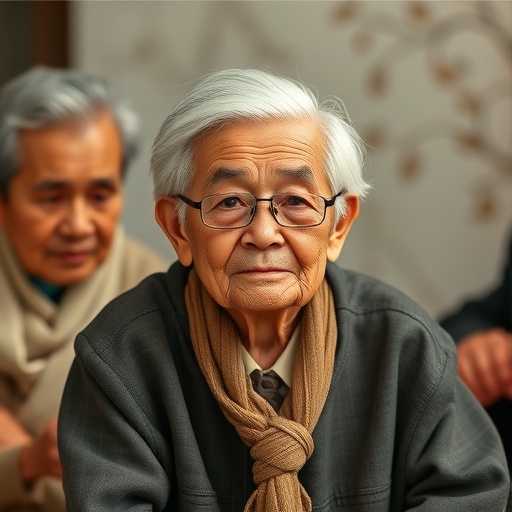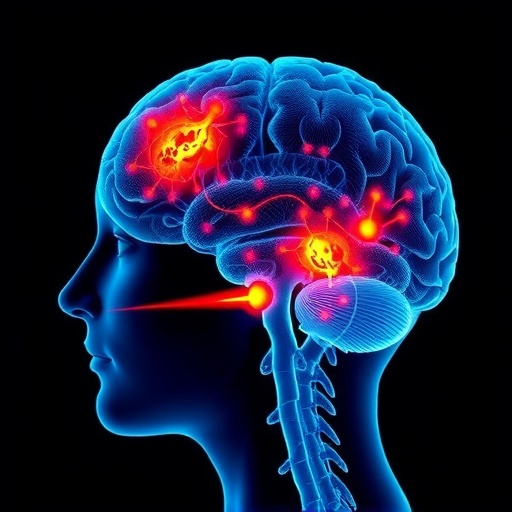Recent research has taken a deep dive into the complexities of frailty among older adults, particularly focusing on Chinese demographics. The study conducted by Shi et al. brings to light significant findings about the evolution of frailty status over a two-year span and identifies key predictive factors that influence the frailty of elderly individuals. This national longitudinal study raises awareness about a topic that is crucial to the health of an aging population, and it sheds light on how society can prepare to better support older adults in maintaining their health and independence.
Frailty is often described as a state of increased vulnerability resulting from a decline in physiological reserve and function across multiple systems. It primarily affects older individuals, making them susceptible to adverse health outcomes, including falls, hospitalization, disability, and even death. In a world where the geriatric population is rapidly increasing, understanding the frailty process becomes essential for healthcare providers, policymakers, and family members alike. This research aims to inform all stakeholders about critical factors associated with this condition while also encouraging proactive measures.
The significance of studying frailty in Chinese older adults cannot be overstated. China is experiencing one of the most rapid demographic changes in history as the proportion of individuals aged 65 and over continues to rise. By 2050, it is projected that around one-third of the Chinese population will fall into this age category. With such a vast number of older adults, understanding frailty and its implications on healthcare is paramount. This study not only examines the current state of frailty but also evaluates how it evolves over time among this demographic, providing invaluable insights.
The methodology employed in this longitudinal study was rigorous and comprehensive. Researchers gathered data from a national cohort of older adults, performing assessments at baseline and two years later. Participants were evaluated for various indicators of frailty, including physical performance metrics, cognitive function, and nutritional status. This multifaceted approach allows for a thorough examination of how frailty manifests and evolves, and it creates a robust framework for identifying potentially modifiable risk factors.
One of the standout findings of this research is the identification of specific factors that significantly affect frailty status. These factors include socioeconomic status, social support, physical activity levels, and comorbidities such as diabetes and hypertension. The interplay among these determinants is crucial in understanding how frailty can be addressed strategically. For instance, the study highlights the importance of social interactions, as those with stronger support systems exhibited slower rates of frailty progression compared to those who were isolated or lacked community engagement.
Interestingly, this investigation also sheds light on the role that lifestyle choices play in frailty outcomes. Participants who engaged regularly in physical activities showed marked improvements in their frailty status over two years compared to sedentary individuals. This finding underscores the necessity of promoting active living among older adults and initiating public health initiatives focused on exercise programs tailored for this age group. The researchers advocate for greater involvement from local organizations and healthcare providers in facilitating such initiatives.
Equally compelling is the study’s exploration of nutrition as a pivotal factor influencing frailty. Nutritional assessments revealed that older adults who maintained a balanced diet rich in protein, vitamins, and minerals experienced less deterioration in their frailty status. This reinforces the importance of nutrition education for older adults as a preventive measure against the decline associated with frailty. The implications for public health policies to consider food security and nutrition programs are evident in the results.
The temporal aspect of frailty is another critical element discussed in the research. Understanding how frailty changes over two years provides valuable insights into the potential for reversibility or deterioration of frailty status. It highlights the dynamic nature of health in older adults, suggesting that timely interventions can lead to improved outcomes. The study emphasizes that while certain factors, such as age and chronic illness, are unavoidable, many others can be addressed through community support, healthcare access, and individual choice.
In addition to highlighting risk factors, the study also presents predictive models that can facilitate earlier interventions. These predictive frameworks utilize baseline data to determine which individuals are at a higher risk of worsening frailty. Implementing such models could significantly enhance preventive healthcare strategies in geriatric medicine, enabling healthcare professionals to focus resources on those most in need efficiently.
As the conversation about aging populations continues, this research prompts a larger dialogue about societal responsibilities. How should governments and healthcare systems respond to the rising frailty rates among older adults? The answers lie in proactive measures—developing comprehensive policies that address social determinants of health, ensuring access to healthcare services, and fostering environments conducive to active aging. Supporting older adults in maintaining autonomy and well-being must be at the forefront of national discussions surrounding elderly care.
The findings of this national longitudinal study not only contribute to the scientific community’s understanding of frailty but also serve as a rallying call for action. Emphasizing the importance of early detection and intervention could catalyze meaningful changes in healthcare practice and policy. With the insights gained, practitioners and legislators can become advocates for programs aimed at improving health outcomes for future generations of older adults.
Moreover, this study also encourages further research to explore the intersectionality of frailty with different aspects of wellbeing, including mental health, quality of life, and social engagement. Investigating how these interconnections evolve over time would enrich our understanding of aging and provide a more holistic view of the support older adults require. The implications of frailty extend beyond physical health—nurturing mental and social wellness is equally critical.
In conclusion, the research conducted by Shi et al. not only enhances our understanding of frailty in Chinese older adults but also prompts a much-needed exploration of strategies to mitigate its impacts. The evolution of frailty over time and its predictive factors present an opportunity for implementing effective, evidence-based interventions. As we face the future of aging populations worldwide, the insights from this study can guide policymakers, researchers, and practitioners in promoting healthier, more fulfilling lives for older adults.
The implications of such research are profound, reminding us that preparation and intervention must go hand-in-hand. The focus on frailty is not merely about managing a condition; it aims to develop a framework for fostering resilience, independence, and a dignified aging experience. As our global population ages, the call to action is not just to observe changes but to proactively engage and innovate to improve the lives of our older citizens.
Subject of Research: Frailty status and predictive factors in Chinese older adults
Article Title: Two-year evolution of frailty status and predictive factors in Chinese older adults: a national longitudinal study
Article References:
Shi, J., Zhang, L., Tao, Y. et al. Two-year evolution of frailty status and predictive factors in Chinese older adults: a national longitudinal study.
BMC Geriatr 25, 911 (2025). https://doi.org/10.1186/s12877-025-06541-0
Image Credits: AI Generated
DOI: https://doi.org/10.1186/s12877-025-06541-0
Keywords: Frailty, older adults, predictive factors, longitudinal study, Chinese demographics.
Tags: Demographic changes in Chinafrailty in older Chinese adultsgeriatric health researchhealth outcomes in elderly populationsimpact of frailty on health and wellnesslongitudinal study on agingphysiological decline in seniorspredictive factors of frailtyproactive measures for elderly carestrategies for maintaining independence in elderlysupport for aging population in Chinavulnerability in aging individuals




